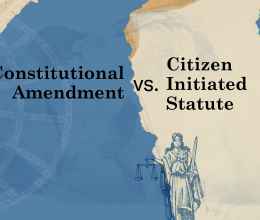Last week the ACLU along with academic partners released a new epidemiological model that shows COVID-19 could claim the lives of as many as 200,000 people – double the federal government’s estimate – if jail populations are not dramatically and immediately reduced. The ACLU model used data from more than 1,200 midsize and large jail systems around the country, whose surrounding communities account for 90% of the U.S. population. The findings indicate that even if communities continue to practice social distancing and follow public health guidance that they will experience much higher death rates if no substantial action is taken to reduce jail populations.
Jails are incubators for COVID-19; this as a well-documented fact. Overcrowding makes social distancing impossible, and a lack of access to basic hygiene items and substandard health care puts incarcerated individuals at extreme risk. This threat of COVID-19 extends beyond those who are incarcerated to facility staff, as well as the communities they return home to. By keeping people in jail, state and county leaders are jeopardizing the health and safety of the general public.
Fortunately, a number of criminal justice system stakeholders in Ohio have recognized the severity of this public health crisis and its impact on incarcerated individuals and local communities. Over one-third of counties across Ohio have taken steps to decrease their jail population in the wake of the COVID-19 pandemic, according to media reports. Articles over the past month highlight the collaborative effort that sheriffs, judges, and law enforcement have made to implement different strategies.
Much of these efforts began mid-March after Chief Justice Maureen O’Connor encouraged judges and local courts to lower money bonds and use summons (e.g. notice to appear in court) instead of arrest to minimize the jail population. The Ohio Supreme Court also released guidance to local courts recommending that judges use their discretion to release incarcerated individuals. Based on those recommendations judges, sheriffs, prosecutors, and other law enforcement officials in counties across the state then started to take a coordinated approach to rapidly reduce their jail populations. Judges held hearings to reduce or remove cash bonds that had been holding pretrial individuals – who are legally innocent –in jail. Sheriffs and police departments implemented measures to stop custodial arrests for low-level offenses and instead issue a ticket, citation, or summons. Additionally, sheriffs and jail officials worked with judges, courts, and prosecutors to review those being held for misdemeanor and certain other offenses for possible release. By taking swift action, counties have been able to reduce jail populations, up to around 60% in some instances, and undeniably save lives.
It’s not just the counties housing major metropolitan areas, counties of all shapes and sizes are taking steps to get people out of their jails:
-
- The Highland County Justice Center averages 80 to 85 inmates each day. On March 31st, the facility was down to 32 inmates, a roughly 60% reduction, which Highland County Sheriff Donnie Barrera credited to the Sheriff’s Office working with judges from Highland County Court, Highland County Common Pleas Court and Hillsboro Municipal Court to release individuals being held on certain charges.
- Tri-County Jail, which serves Champaign, Madison and Union Counties, worked with courts to release individuals being held on misdemeanor offenses and decreased their population by 40%.
- In Allen County, the jail population dropped by over half (52%) as of April 8. Two-thirds of individuals were released under judge’s orders due to their COVID-19 preparedness plan.
- As of April 16th, Chief Deputy Rick Minerd reported that the number of incarcerated individuals in Franklin County jails dropped by about 32%, from 1,960 to 1,350. Most of the decrease has been attributed to summons being issued.
- Muskingum County Sheriff Matt Lutz and Zanesville Police Chief Tony Coury focused on limiting jail intake by issuing fine-only citations or pushing back arraignments/sentencings for certain offenses. The county jail population was around 180 in January and February and then fell to 138 on at the beginning of April, reflecting a 23% decrease. In addition, the city jail houses 60 to 70 people normally, but the population has been reduced by roughly two-thirds to 20 to 25 people.
- As of April 15, the population of the Greene County Jail and Adult Detention Center has been cut in half (49%).
- Cuyahoga County received national attention for being an early adopter of measures to reduce their jail population. Between March 9th and March 31st, the number of those incarcerated dropped by about 900 to its lowest level in history. As of April 23rd, the jail population was reportedly reduced to under 1,000 individuals (estimated 50% reduction). This was in part due to the work of local judges, prosecutors, the Sheriff’s Department and others to reduce jail intakes and release those being held on certain offenses.
While some jails have taken action, the response hasn’t been uniform across the state, meaning that many Ohioans are still being unnecessarily held behind bars and are at risk. This is incredibly concerning as reports of positive COVID-19 cases in jails continues to grow with each passing day. On April 14th, it was reported that 28 incarcerated individuals had tested positive for COVID-19 across five Ohio jails — Butler, Franklin, Lucas and Cuyahoga counties, and the Middletown City Jail in southwest Ohio. Cuyahoga County Jail has reportedly seen the highest number of cases, which tripled in less than two weeks, demonstrating how quickly COVID-19 can spread in our jails.
News outlet and advocates are informing the public of new COVID-19 cases on an ongoing basis, because state and county officials have not made that information accessible. While the Ohio Department of Rehabilitation and Correction (ODRC) provides daily reports on COVID-19 in Ohio’s state prison system, the same is not true for jails. The unfortunate lack of transparency means that we don’t have a full picture of how COVID-19 is actually impacting Ohio’s jails and what measures are being taken to mitigate the spread. Systematic, uniform reporting can be challenging to achieve across counties, but necessary considering the risk that an outbreak poses to incarcerated individuals and local communities.
We need accountability and transparency, and we need it now.
Counties that haven’t taken action to reduce their jail populations must take immediate action. The path is clear and has already been paved – release inmates that are in for misdemeanor charges, expand cite and release policies, stop custodial arrests for a variety offenses, and end cash bail. COVID-19 should not turn a jail sentence into a death sentence. Keeping people out of jail will save lives.








